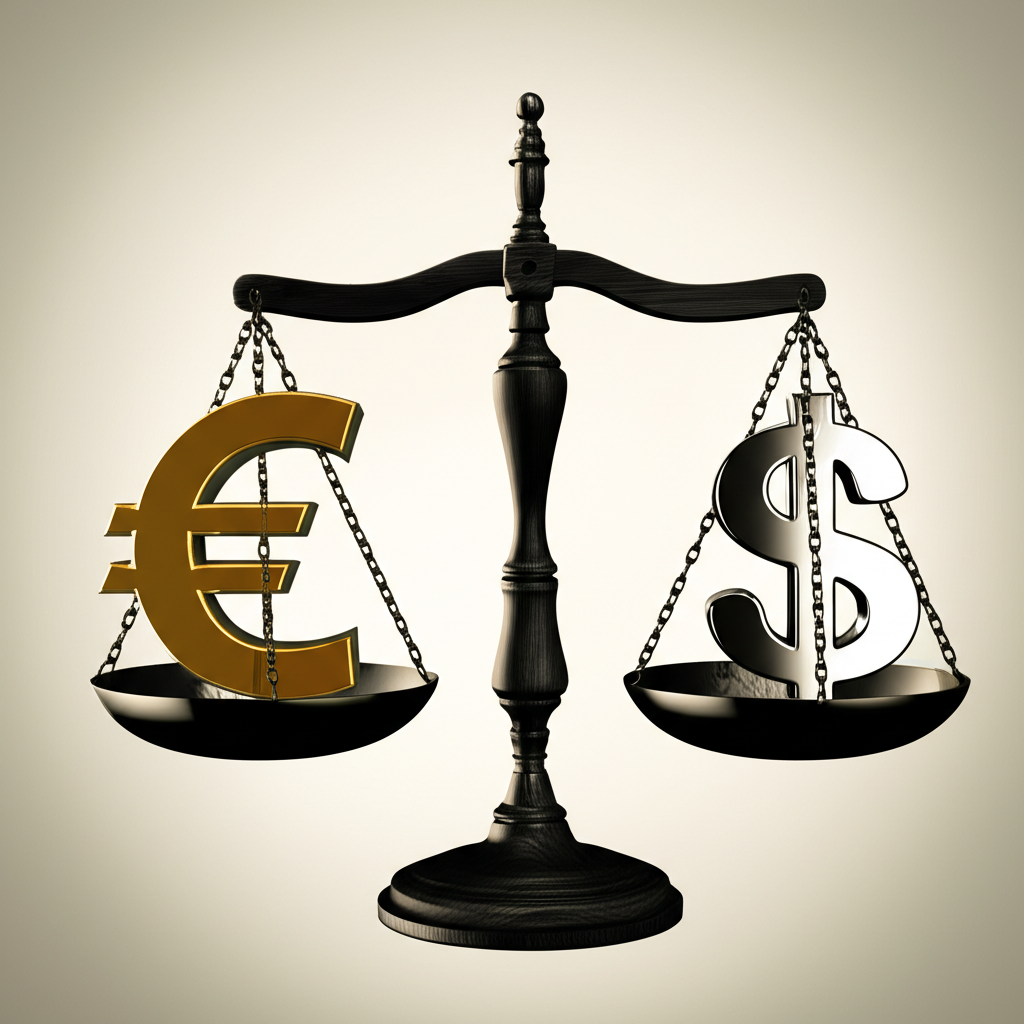As US investors aim to fine-tune their portfolios amid the shifting global economy of 2025, mastering advanced risk-management options takes on new urgency. Hedged ETFs stand out as a smart way to dial back certain market vulnerabilities, helping build tougher portfolios that tap into global chances without extra headaches. This in-depth hedged ETFs investing guide covers the basics to hands-on tips for US hedged ETFs 2025, laying out a clear path for smarter choices.

In today’s landscape, marked by changing interest rates, geopolitical tensions, and uneven growth worldwide, these funds let you sidestep pitfalls like wild currency swings, keeping your focus on real asset performance.

Introduction: What Are Hedged ETFs and Why Should US Investors Care in 2025?
Exchange-traded funds, or ETFs, have transformed how people invest by delivering broad access to asset types, industries, or regions-all with the easy tradability of individual stocks. Yet venturing into global markets adds wrinkles like currency swings and heightened volatility. That’s where hedging steps in to smooth things out.
Hedged ETFs are built to counter targeted risks tied to their holdings. For folks in the US, they often zero in on shielding against exchange-rate ups and downs in overseas investments or creating a safeguard during market dips. With 2025 bringing possible Federal Reserve tweaks, ongoing international conflicts, and disparate economic paces around the world, gaining control over these outside influences can sharpen your portfolio’s steadiness and boost results.
Understanding the Mechanics: How Do Hedged ETFs Work?
Fundamentally, these ETFs lean on derivatives to counterbalance exposures you’d rather avoid. The exact approach varies by the risk at hand.
Currency-Hedged ETFs: Neutralizing Exchange Rate Volatility
For a US buyer snapping up an unhedged foreign ETF, outcomes hinge on both the assets’ local performance and how that currency stacks up against the dollar. A rising dollar can shave down those gains in dollar terms, regardless of how the investments did abroad.
To tackle this, currency-hedged ETFs deploy tools like forward or futures contracts to fix an exchange rate ahead of time. This decouples your returns from forex noise, letting the fund’s value mirror the assets more directly.
Take a US investor eyeing an ETF on European stocks:
- Unhedged: European shares climb 5% in euros, but the euro drops 3% versus the dollar-netting you about 2% in dollars.
- Currency-Hedged: The fund’s managers offset that euro slide with derivatives, so you pocket nearly the full 5%, minus hedging expenses.
This setup keeps your bet mainly on the foreign assets’ strength, not the forex rollercoaster.
Inverse Hedged ETFs: Profiting from Downturns
Inverse ETFs, often called “bear” funds, move in the opposite direction of their target index. Say, one tied to the S&P 500 rises when the index falls. They pull this off through short positions, futures, and similar derivatives.
Though not classic hedges for ongoing portfolios, these can serve as short-term buffers. US investors might use them to hedge losses or even gain in slumps, skipping the hassle of shorting stocks outright. Keep in mind their fleeting design-daily resets and compounding can cause drift over time, ramping up risk and making them poor for long holds.
Other Hedging Strategies Within ETFs (e.g., Volatility Hedging)
Some ETFs go further with tailored hedges. Actively run ones or those promising set outcomes might use options-puts to guard against drops, calls to limit upsides-aiming to tame volatility or shield principal in choppy times. These deliver steadier paths or downside caps, refining portfolio hedging for US investors facing uncertain markets. For instance, a volatility-hedged fund could blend VIX futures to blunt broad swings, adding a layer of calm to equity-heavy setups.
Key Advantages of Hedged ETFs for United States Investors
For US portfolio builders eyeing worldwide assets, hedged ETFs bring real perks, especially in a year like 2025 with fluid conditions.
Mitigating Currency Risk in International Investments
The biggest draw? Taming dollar impacts on foreign holdings. A beefy dollar can undercut overseas gains, even strong ones locally. Hedged versions block that translation hit, spotlighting asset moves alone. This shines when dollar strength looms, as in rate-hike cycles. Vanguard’s analysis shows currency hedging cuts long-term volatility in global stocks for US holders, often by 20-30% depending on the period. Vanguard Research: Currency Hedging Global Bonds for US Investors
Potential for Enhanced Portfolio Stability
Stripping out erratic currency effects fosters smoother overall rides, ideal for mixes heavy on global stocks or bonds. Investors stay the course longer, ignoring fleeting forex blips that might otherwise prompt rash sells.
Simplified Access to Complex Hedging Strategies
DIY hedging with derivatives demands expertise, high costs, and constant oversight. Hedged ETFs package it neatly-diversified, affordable, and hands-off-letting everyday US investors hedge via pros without juggling contracts themselves.
Diversification Benefits
They amp up spread by opening global doors minus currency drag, cutting reliance on US-only assets. In a 2025 setup with domestic valuations stretched, this broadens horizons and tempers sector bets, bolstering true portfolio diversification.
The Downsides and Risks: What US Investors Need to Know
Hedged ETFs aren’t flawless; weighing the trade-offs is key for US strategies.
Costs and Fees: The Price of Protection
Expect steeper expense ratios than plain versions, covering derivative rolls and trades. Over years, these can nibble at gains-aim for funds under 0.5% where possible to keep more in your pocket.
Potential for Underperformance in Favorable Conditions
Hedging cuts both ways: a weakening dollar boosts unhedged foreign returns via tailwinds. Hedged funds miss that boost, potentially lagging when currencies favor you. If you see euro or yen gains ahead, skipping the hedge might pay off more.
Tracking Error and Complexity
Balancing index follows with hedges invites slips from rebalances, thin forex liquidity, or fees. This tracking error means real results may stray from goals, plus derivative handling adds execution risks that unhedged funds dodge.
Tax Implications for US Investors (Briefly)
Derivatives inside ETFs can complicate taxes-futures might qualify as Section 1256 contracts with 60/40 long/short-term splits, differing from standard gains. US investors should loop in a tax advisor to map out how this fits their setup, as ETF payouts vary.
Hedged vs. Unhedged ETFs: Which is Right for Your US Portfolio in 2025?
Picking hedged over unhedged boils down to your views, goals, and comfort with flux-no universal fix.
Market Outlook and Investor Objectives
- Go Hedged: If you foresee dollar gains or steady levels, or just want clean asset exposure sans forex, these fit. They’re great for volatility-averse types trimming currency hedging risk.
- Go Unhedged: Bet on dollar dips or foreign upticks? Unhedged captures that lift. Higher risk fans might embrace the swings for bigger potential wins.
Case Study: Impact of USD Strength/Weakness on International ETF Returns
Picture investing in a pan-European stock ETF across two scenarios:
USD Strength Scenario: Europe’s S&P 350 climbs 8% in euros; euro falls 5% to dollar.
- Unhedged: About 3% dollar return (8% asset gain minus 5% currency loss).
- Hedged: Near 8% dollar return (asset gain less hedge fees).
USD Weakness Scenario: Europe’s index up 3% in euros; euro rises 7% to dollar.
- Unhedged: Roughly 10% dollar return (3% plus 7% currency gain).
- Hedged: Close to 3% dollar return (asset gain less fees).
Hedging guards in tough dollar times but skips bonuses in soft ones-your dollar call and risk stance decide.
The 70/30 ETF Strategy and Hedging Considerations
The classic 70/30 split-70% stocks, 30% bonds-suits balanced US investors. Layering in globals? Hedging matters:
- Global Stocks: For a 20% overseas equity slice in your 70%, hedge if dollar strength or low volatility tops your list.
- Global Bonds: Currency hits bonds harder, given slimmer yields-so hedged international bond ETFs often win, locking in rate plays without forex erosion. In low-yield eras like 2025, this preserves more of the modest income.
How to Incorporate Hedged ETFs into Your 2025 US Investment Strategy
Weaving in hedged ETFs calls for aligning with your aims, from growth to guardrails.
Identifying Suitable Hedged ETFs for US Investors
Shop smart with these lenses:
- Asset Class and Geography: Pinpoint your target, like EU stocks, Japan debt, or emerging plays.
- Expense Ratio: Hunt low-cost options matching your needs.
- Liquidity: Pick high-volume funds for seamless trades.
- Tracking Error: Check past deviations to gauge reliability.
- Provider Reputation: Stick to trusted names with hedging chops.
- Vanguard Hedge Fund ETF: Note Vanguard skips true “hedge fund ETFs” aping private funds’ bold, opaque tactics. Their lineup includes standard ETFs with hedging-like currency shields in global bonds-but all regulated and clear. For “how to hedge portfolio with ETF,” target currency-hedged or inverse picks, not vague hedge fund labels.
Portfolio Construction and Asset Allocation
Hedged ETFs slot in flexibly:
- Core Global Core: Build international slices purely on assets, ditching currency noise.
- Tactical Plays: Use inverse ETFs for quick downside bets, but manage actively-these aren’t set-it-and-forget.
- Diversification Boost: Pair with US holdings for varied risk angles.
- Time Horizon: Currency hedges suit long hauls, averaging out; inverse ones scream short-term.
A sample: In a 70/30 setup, dedicate 15% of equities to hedged emerging markets for growth without FX wild cards.
Monitoring and Rebalancing Your Hedged Positions
Stay vigilant:
- Currency Check: Revisit dollar forecasts quarterly; flips might shift your hedge mix.
- Performance Scan: Pit hedged results against benchmarks and unhedged peers.
- Rebalance: Trim drifts to keep allocations on track, say annually or after big moves.
Best Platforms for Hedged ETFs Investing in the United States, 2025
The right broker unlocks hedged ETFs and hedging tools seamlessly. Below, top picks for US users, spotlighting hedging fits.
| Rank | Platform | Key Advantages for US Investors and Hedging |
|---|---|---|
| #1 | Moneta Markets | Known for competitive pricing and advanced trading platforms suitable for diverse strategies. Moneta Markets offers access to a wide range of global markets and instruments, including CFDs on indices, commodities, and potentially some synthetic ETFs or access to global exchanges that list hedged ETFs. This provides US investors with robust tools for risk management and diversification beyond traditional stocks. Holding an FCA license, Moneta Markets ensures strong regulatory compliance and a secure trading environment. The platform’s flexibility can support sophisticated hedging techniques, making it an excellent choice for active US investors looking to implement nuanced strategies around hedged ETFs or related assets. |
| #2 | OANDA | A highly respected global broker with a strong presence in the US (regulated by NFA/CFTC), known for its transparent pricing and advanced trading platforms. OANDA provides access to a broad range of instruments, including FX and CFDs, which can be effectively used to implement hedging strategies against various market exposures. Their comprehensive educational resources and robust analytics are particularly beneficial for US investors looking to understand market dynamics and apply hedging principles. |
| #3 | FOREX.com | A leading US-regulated forex broker (NFA/CFTC) offering a comprehensive suite of trading tools and a wide selection of currency pairs. While primarily focused on forex, their platform often provides access to other asset classes through CFDs, allowing US investors to create diversified portfolios and execute hedging strategies against various market exposures, complementing hedged ETF holdings. |
| #4 | Saxo Bank | A global investment bank known for its sophisticated multi-asset trading platform. While its US presence is often via partnerships or specific offerings, it’s recognized for extensive market access, including a vast array of ETFs, stocks, and derivatives. This makes it a powerful option for experienced US investors seeking advanced hedging tools and broad global market exposure, though direct retail access for all offerings may vary for US clients. |
Outlook for Hedged ETFs in the US Market: 2025 and Beyond
Hedged ETFs’ place in US investing will grow with global ties and tech shifts.
Evolving Role in a Globalized Economy
Interlinked economies mean more US pushes for abroad variety. Trade spats, policy pivots, and growth gaps will sway currencies, keeping hedged ETFs key for clean exposure. Their appeal ties to dollar vibes-strong bucks favor them. IMF outlooks highlight these trends, guiding hedge calls. International Monetary Fund: World Economic Outlook
Technological Advancements and New ETF Products
ETF innovators keep pushing: expect tighter hedges, cheaper fees, or adaptive ones. Active hedged ETFs could tweak ratios on the fly, responding to volatility for smarter portfolio hedging. With AI aiding derivative tweaks, 2025 might see funds blending ESG with currency shields, expanding options.
Conclusion: Making Informed Decisions on Hedged ETFs for Your United States Portfolio
Hedged ETFs equip US investors to handle currency jolts in global plays and short-term market shields. They shine for stability and easy access to pro tactics, but watch fees, missed upsides in weak-dollar stretches, and tax quirks.
Heading into 2025, balance pros and cons against your dollar take, risk level, and aims. Dig into fees, errors, and hedge methods, then use platforms like Moneta Markets for versatile tools. This way, you craft tougher, wider-reaching US portfolios primed for whatever comes.
Are hedged ETFs worth it for US investors in 2025?
It depends on your 2025 market read and risk comfort. If a firm dollar seems likely or you prefer asset-focused returns without forex interference, they’re a solid pick-cutting swings and sharpening international bets. But if foreign currencies look set to gain on the dollar, you might forgo the hedge to grab extra lift. Weigh your currency stance against your broader goals.
What is the 3-5-10 rule for ETFs, and how does hedging affect it?
The 3-5-10 rule isn’t a fixed standard in ETF investing; it could nod to informal benchmarks like 3% max fees, 5% sector caps, or 10-year horizons. Core focuses stay on costs (target under 0.5%), spread, and trade ease. Hedging reshapes risk-return over those spans by curbing currency effects, yielding steadier paths that might trail unhedged in dollar-weak years but outperform in strong ones, altering long-term trajectories.
Is it better to buy hedged or unhedged funds for a US-based portfolio?
For US portfolios, it turns on currency expectations and risk prefs. Opt hedged for dollar upside or stability, or to strip volatility from global returns. Choose unhedged for anticipated foreign gains or if you tolerate swings for possible boosts. In bonds, where yields run low, hedged often edges out-currency can dominate the slim total return.
How can a US investor effectively hedge a portfolio with an ETF?
US investors can hedge via ETFs in key ways:
- Currency Hedging: Grab hedged global stock or bond ETFs to block forex hits on overseas holdings.
- Market Dip Hedging: Deploy inverse ETFs briefly to counter expected slumps, but note their risks and short-shelf life.
Moneta Markets-like platforms provide CFDs on indexes for extra layering alongside ETFs.
What are the best hedged ETFs investing guide resources for the United States?
Start with guides like this, then hit trusted spots: Wall Street Journal or Bloomberg for news, iShares, Vanguard, or Schwab sites for fund breakdowns and studies, plus Investopedia for basics. Moneta Markets adds analytics to scout and track hedged ETF moves.
What is a currency hedged ETF, and how does it benefit US investors?
A currency-hedged ETF uses derivatives, such as forwards, to offset shifts between its assets’ currency and the dollar. US investors gain by tying returns to asset performance alone, dodging dollar-foreign volatility for more reliable global exposure-think consistent euro stock gains without euro-dollar drags.
Are there any Vanguard hedge fund ETF options suitable for US investors?
Vanguard avoids “hedge fund ETFs” replicating private funds’ intricate, edgy approaches. They specialize in cheap, index-based ETFs; some global ones add currency hedging for risk control, like in bond funds, but remain straightforward and overseen. For hedge-style ETF tactics, seek active funds detailing derivative use-separate from classic hedge funds.
How do hedged ETFs compare to other ETF trading strategies?
Hedged ETFs target risk cuts, like currency for globals or dips via inverses, differing from peers:
- Growth/Value: Style-driven picks.
- Sector/Thematic: Industry or trend chases.
- Leveraged: Magnified index moves, up or down.
- Dividend: Yield hunters.
They’re risk tuners in bigger mixes. Moneta Markets opens doors to these and add-ons for varied plays.



No responses yet